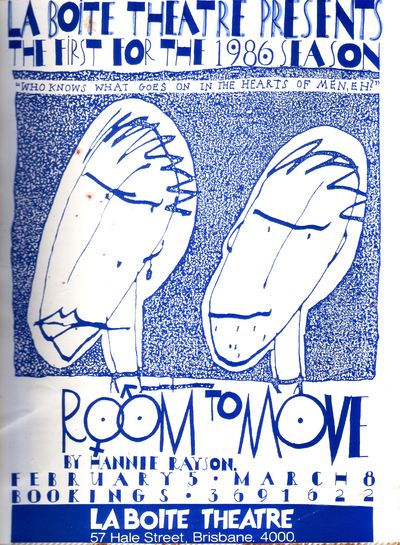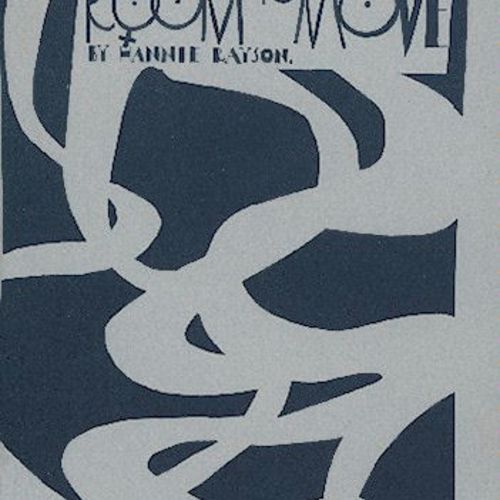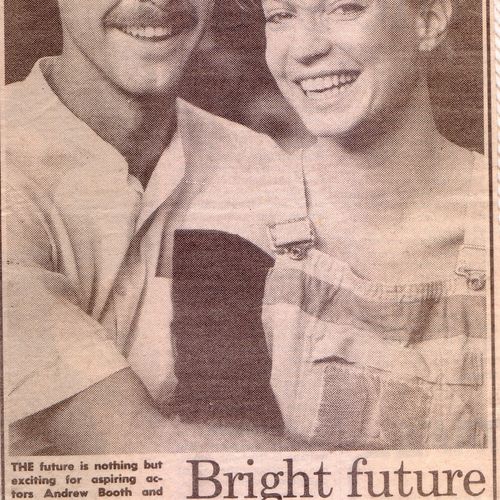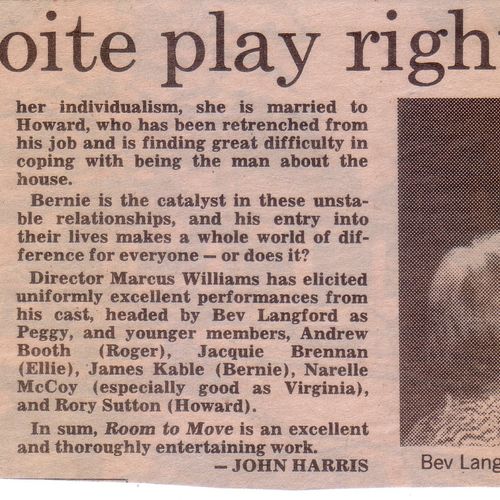Room to Move by Hannie Rayson
Review by Sue Gough
I congratulate La Boite on starting the season with a production that scores tens on writing, direction, acting, entertainment and relevance.
At a recent function I saw an inoffensive man approach a group of women ... and offer to get them drinks. One of them turned on him. "Piss off," she said. "We are having a serious feminist discussion." It is an extreme example but somehow epitomises the "damned if you do and damned if you don't" male dilemma. Small wonder that same men who feel threatened by the rapidly changing rules of the game pick up their marbles, if they still have them, and go home.
I am delighted that this sensitive ground should have been explored with such skill by a woman writer. Hannie Rayson has no time for the polemics of the underbitch, using instead even-handed honesty and great good humour. Sympathy for the ex- enemy surely speaks of a new feminist self-esteem and maturity.
Her central character is Bernie, a young man confused by love, sociology and his own brand of honesty. Fleeing from a relationship with an ardent feminist, he moves in to lodge with 60-year-old widow Peggy. His hopes of temporary refuge are shattered as he becomes embroiled with Peggy's family.
James Kable as Bernie plays his first professional role with an effortless talent. This says much for his own abilities but also speaks for the gentle accuracies of the script.
The part of Peggy could well have been created for Bev Langford who gives her just the right blend of blindness, honesty and courage.
Her son Roger and his wife Ellie (Andrew Booth and Jacquie Brennan) and her daughter Virginia and husband Howard (Narelle McCoy and Rory Sutton) represent the contemporary marriage options and neither work.
Virginia and Howard cannot rest easy with their role reversals and Roger and Ellie are even more miserable with their more than traditional positions. Each of these actors realised their roles extremely well but it is worth mentioning that the audience hated poor MCP Roger so much that they hissed him!
Together, the characters pose a number of questions: what is the price of companionship? Why, here in the 80s, do we still look to the 50s for the solution to questions of the 60s and 70s? Are the conflicts between the generations as insoluble as those between the sexes?
As the couples circle Peggy and Bernie in uneasy orbit, their attraction for one another becomes even more precarious and Bernle provides an unwilling gravitational pull that sets them on collision courses. He is left with no option but to move on.
Marcus Hughes' direction has fulfilled the play's potential beautifully, picking up every nuance of script and sub-script without labouring them. The simplicity and humour of the narrative are balanced by the complexity of its form. The action circulates from couple to couple connected by threads of theme and echoes in different keys. It provides a very pleasing symmetry.
The Australian, 6 February 1986
Courtesy Bev Langford






Tell us your story